PRINCIPLES OF A SOUND STATE SCHOOL FINANCE SYSTEM
EXECUTIVE SUMMARY
A recent report from the National Conference of State Legislatures defines a sound state school finance system by five principles: 1) Equity; 2) Efficiency; 3) Adequacy; 4) Accountability; and 5) Stability.
Oklahoma has made great inroads in meeting these five principles. This report shows how Oklahoma has met these requirements and where improvement is needed for the future.
Oklahoma has made improvements in the following areas:
Equity
- Number of school districts had decreased from 604 to 549 in six years
- Majority of funding for local school districts comes from state aid appropriation (70%)
- Over 99% of the student population falls within 5% of the average revenue per weighted ADM
Efficiency
- The budget of the State Department of Education was reduced by over 19% over the last six years
Adequacy
- State appropriations for K-12 education in Oklahoma have increased 27.8% over the last six years
Accountability
- Administration expenses have decreased from 10.7% in 1991-92 to 9.1% in 1994-95
- Expenditure for instruction has increased from $1.2 billion in 1991-92 to $1.5 billion in 1994-95
- The number of approved deregulation requests have quadrupled over the last four years
Stability
- Oklahoma's State Aid Funding Formula was originally constructed in 1981, with changes made in 1990 and 1996.
PRINCIPLES OF A SOUND STATE SCHOOL FINANCE SYSTEM
In early 1994, the National Conference of State Legislatures and the Foundation for State Legislatures convened a group of state legislators, legislative staff, business organizations and nonprofit organizations to begin a conversation about the principles and components of a sound state school finance system.
In September 1996, this group issued a report outlining five primary principles that make a sound state school finance system. This analysis outlines these principles and compares them to Oklahoma's school funding system.
1. Equity - "A sound state school finance system provides equity for both students and taxpayers."
Oklahoma has 449 school districts distributed through 77 counties. The enrollment for the 1995-96 school year was 616,497. This is a 6.5% increase over the 1989-90 school year.
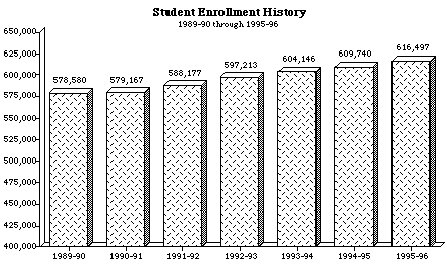
Oklahoma's revenue for public schools comes from four sources: 1) state appropriations; 2) state dedicated revenues; 3) local revenue; and 4) federal revenue.
The following graphs depict the apportionment from each source for the national average and for Oklahoma.
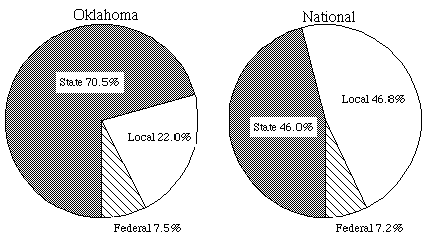
The basic premise in Oklahoma's state aid funding formula is that each district is different. Differences in student population, student characteristics and district characteristics are taken into account when determining the cost of educating students.
An analysis done by the Senate Fiscal Staff shows that for the 1995-96 school year Oklahoma improved its percentage of equitable distribution of revenue among school children. The number of students within a 5% range of the State Average Weighted per Child Revenue ($2,304) was 586,100, representing 99.39% of all students. The analysis is based on the total district revenue (local and state) and the weighted average daily membership.
The reason for the greater equitable distribution can be traced back to the Education Reform Act of 1990. This act required over $500 million of state appropriated revenue to be pumped into the state funding formula. The additional state revenue decreased the reliance of education funding on local property taxes.
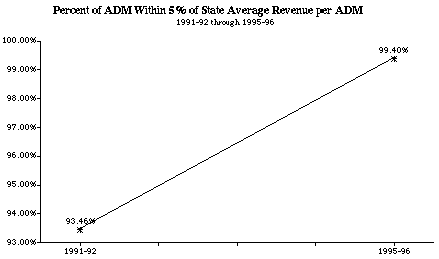
Many states have undergone costly legal battles in defending their education funding formulas. Due to our history of equitable funding we have not had to expend precious resources on court cost but instead have continued to concentrate on improving educational services to meet the needs of Oklahoma's diverse student population.
2. Efficiency - "A sound state school finance system is efficient, making the best possible use of resources. An efficient school finance system also minimizes the costs of state oversight through ease of administration and ease of local school district compliance."
While revenue for K-12 education increased during the early 1990s, the Legislature stressed efficiency and effectiveness by reducing the State Department of Education's appropriation. From FY'91 through FY'97, the department's budget was reduced by 19.5%, for a total of $4.3 million.
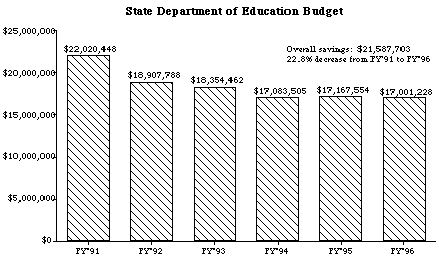
The State Department of Education is on average 11% below its budgeted level for full-time equivalent (FTE) staff and in FY'95 had 26 fewer employees than the law allows for the agency. The agency is moderately sized having 520 employees (80% state funded) serving yearly well over 600,000 students and approximately 45,000 educators. The agency also provides services to 211 public libraries, 13,680 GED applicants, and 2,700 school board members.
In 1992 the State Board of Education declared that all rules, except those pertaining to public health and safety, were eligible for deregulation. Recent legislation in 1995 and 1996 also allowed deregulation from some statutory requirements and removed the requirement that the Board of Education had to hold a public hearing before approval of any deregulation plan.

3. Adequacy - "A sound state school finance system provides adequate resources to local school districts so that they may achieve state and local educational goals and standards."
State appropriations for K-12 education in Oklahoma have increased 27.8% over the last six years. Significant increases in fiscal years' 91-95 were made possible because of the passage of Oklahoma's Education Reform Act (HB 1017) in 1990. This legislation increased state sales taxes, the personal income tax, and the corporate income tax to provide additional money for education.
The following graph depicts the budget and FTE levels of the State Board of Education over the last six years.
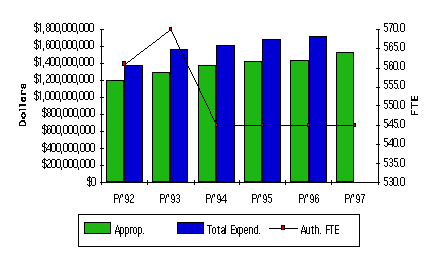
Although Oklahoma's public schools have received a historical increase in revenue over the last six years, their national standings for per pupil revenue remain stagnant. The following Table depicts the per pupil revenue increases and Oklahoma's national ranking.
Public School Revenue Per Average Daily Attendance (ADA)School Year Revenue Per ADA Percent Increase National Ranking 89 - 90 $3,796 4.0% 45th 90 - 91 $4,230 11.4% 45th 91 - 92 $4,393 3.8% 45th 92 - 93 $4,624 6.8% 45th 93 - 94 $4,701 1.6% 45th 94 - 95 $4,910 4.4% 45th
4. Accountability - "A sound state school finance system incorporates fiscal accountability at the state and local levels through generally accepted budgeting, accounting and auditing procedures. Increasingly, accountability links finance and outcomes as in performance-based budgeting. accountability also includes collection of a state fiscal data base for systematic evaluation of the funding system at regular intervals."
As required by the Oklahoma Education Reform Act statistical reports regarding the performance of the state's public schools are provided to the people of Oklahoma through the Office of Accountability. Reports from the Office of Accountability provide yearly and historical comparisons of public school and district graduation rates, dropout rates, pupil-teacher ratios, enrollment rates, school district finances, and test results.
Expenditures for K-12 education in Oklahoma focus primarily on instruction, and district support. Administration expenses have decreased from 10.7% in 1991-92 to 9.1% in 1994-95. Expenditure for instruction has increased from $1.2 billion to $1.5 billion during this period, however, the total percentage going toward instruction has decreased 5.5%. The following graph compares the expenditure percentages in seven areas from 1991-92 to 1994-95.
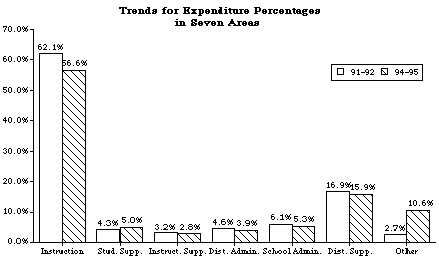
5. Stability - "A sound state school finance system promotes predictability and stability of education revenues and expenditures over time."
The basic structure of Oklahoma's state aid funding formula was originally adopted in 1981. The Education Reform Act of 1990 made only small changes. These changes include the use of Average Daily Membership(ADM) as the basis for both tiers of the formula, the addition of weights for the economically disadvantaged, and a special factor for the sparsity/isolation of a school district.
To alleviate funding problems for mid-term growth the funding formula will undergo more changes beginning with the 1997-98 school year. School districts will be able to update their state aid allocation using current school year ADM. At the same time local revenue used to offset state aid will be updated using current year collections. These changes will allow school districts to meet their current year funding needs almost immediately, while ensuring that Oklahoma continues to have one of the most equitable formulas in the nation.
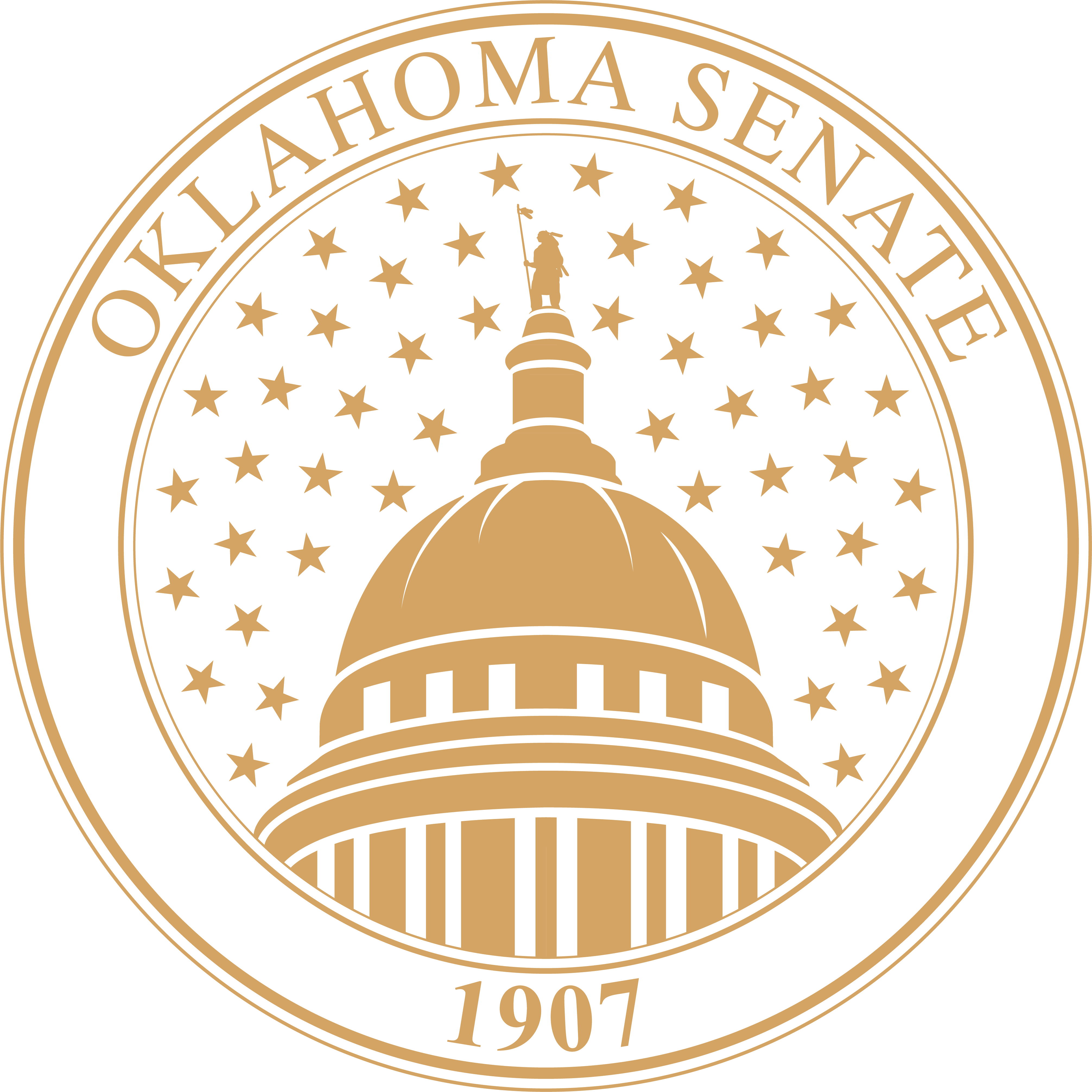 Oklahoma Senate
Oklahoma Senate

